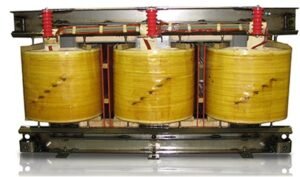The Allure of the Iranian Whitney

iranian whitney
Have you ever wondered what happens when cultural heritage meets modern artistry? The intriguing blend of tradition and innovation often creates something uniquely captivating. One such example is the phenomenon known as the “Iranian Whitney.” This term, which might sound unfamiliar at first, refers to the remarkable fusion of Persian art and contemporary flair inspired by the iconic Whitney Museum of American Art.
Introduction
Art has always been a powerful medium for expressing cultural identity and bridging different worlds. The Iranian Whitney represents a compelling intersection where Persian artistry meets contemporary techniques, inspired by the renowned Whitney Museum. This fusion not only highlights the richness of Persian culture but also underscores the universality of artistic expression.
Understanding the Iranian Whitney
The term “Iranian Whitney” is a symbolic reference to the blend of Persian art traditions with the modern and often avant-garde styles showcased at the Whitney Museum. It encapsulates a movement where Iranian artists incorporate elements of their rich heritage into contemporary art forms, creating pieces that resonate on both local and global stages.
Historical Context: Persian Art
Ancient Roots: Persian art boasts a history that spans millennia, with its roots tracing back to the ancient civilizations of Iran. From intricate tile work and elaborate carpets to miniature paintings and grandiose architecture, Persian art is renowned for its detailed craftsmanship and profound symbolism.
Evolution Over Time: Over the centuries, Persian art has evolved, influenced by various dynasties and cultural exchanges. The Safavid era, for instance, is noted for its flourishing art scene, marked by advancements in textile, ceramics, and painting.
The Whitney Influence
A Beacon of Modern Art: The Whitney Museum of American Art, located in New York City, is celebrated for its focus on 20th and 21st-century American art. It has been a platform for contemporary artists to push boundaries and explore new artistic expressions.
Inspiration for Iranian Artists: For Iranian artists, the Whitney represents a gateway to the global art scene. Its emphasis on innovation and boundary-pushing works serves as an inspiration, encouraging them to blend traditional Persian elements with contemporary techniques.
The Artistic Fusion
Blending Traditions: The Iranian Whitney movement is characterized by a seamless blend of traditional Persian motifs with modern artistic practices. This fusion creates a dialogue between the past and the present, showcasing the timeless relevance of Persian art.
Techniques and Styles: Artists in this movement employ a variety of techniques, from traditional miniature painting to modern digital art. They explore themes such as identity, displacement, and cultural heritage, often using bold colors and intricate patterns.
Key Artists and Their Works
Shirin Neshat: Known for her powerful video installations and photography, Shirin Neshat explores themes of exile, identity, and gender. Her works often feature Persian calligraphy and motifs, creating a poignant connection between her heritage and contemporary issues.
Parviz Tanavoli: A pioneer in the Iranian Whitney movement, Tanavoli is renowned for his sculptures that blend Persian folklore with modernist elements. His work often features the iconic figure of the “Heech” (nothingness), symbolizing philosophical musings on existence.
Y.Z. Kami: This artist’s large-scale portraits are a testament to the fusion of Persian miniature traditions with modern techniques. His serene and contemplative works evoke a sense of timelessness, bridging the gap between the ancient and the contemporary.
Themes and Motifs
Identity and Exile: Many Iranian Whitney artists explore themes of identity and exile, reflecting the experiences of the Iranian diaspora. Their works often delve into the complexities of cultural heritage and the longing for a homeland.
Cultural Heritage: Persian motifs, such as intricate geometric patterns and calligraphy, are prevalent in these artworks. These elements serve as a reminder of the artists’ rich cultural background and their connection to their roots.
Modernity and Tradition: The juxtaposition of modernity and tradition is a central theme in the Iranian Whitney movement. Artists strive to create a harmonious balance between the old and the new, showcasing the enduring relevance of Persian art in the modern world.
Cultural Significance
Preserving Heritage: The Iranian Whitney movement plays a crucial role in preserving Persian cultural heritage. By incorporating traditional elements into contemporary works, artists ensure that their cultural identity remains vibrant and relevant.
Global Influence: The movement also highlights the global influence of Persian art. By blending traditional motifs with modern techniques, Iranian Whitney artists create works that resonate with audiences worldwide, fostering a greater appreciation for Persian culture.
Public Reception and Critique
Positive Reception: The Iranian Whitney movement has been met with enthusiasm from art enthusiasts and critics alike. Its innovative approach and rich cultural references have garnered widespread acclaim.
Critique: However, some critics argue that the fusion of traditional and modern elements can sometimes dilute the authenticity of Persian art. They caution against the over-commercialization of cultural heritage.
Impact on Contemporary Art
Broadening Perspectives: The Iranian Whitney movement has significantly impacted contemporary art by broadening perspectives and fostering cross-cultural exchanges. It has encouraged artists from various backgrounds to explore their heritage and incorporate it into their works.
Innovative Practices: The movement has also inspired innovative artistic practices, pushing the boundaries of what is possible in art. The blend of traditional and modern techniques creates a unique visual language that continues to evolve.
Future Prospects
Continued Evolution: The Iranian Whitney movement is poised to continue evolving, with new artists emerging and contributing to its dynamic landscape. As global interest in Persian art grows, the movement is likely to gain even more prominence.
Educational Initiatives: There is also potential for educational initiatives that highlight the significance of the Iranian Whitney movement. Workshops, exhibitions, and collaborations with art institutions can help foster a deeper understanding and appreciation of this unique fusion of traditions.
Conclusion
The Iranian Whitney movement is a testament to the power of art to transcend cultural and temporal boundaries. By blending the rich traditions of Persian art with contemporary techniques, artists create works that resonate on a profound level. This movement not only preserves and celebrates Persian heritage but also enriches the global art scene, showcasing the universal language of creativity.
FAQs
1. What is the Iranian Whitney? The Iranian Whitney refers to a movement where Iranian artists blend traditional Persian art with contemporary techniques, inspired by the Whitney Museum of American Art.
2. Who are some key artists in the Iranian Whitney movement? Key artists include Shirin Neshat, Parviz Tanavoli, and Y.Z. Kami, known for their innovative works that combine Persian motifs with modern styles.
3. What themes are commonly explored in the Iranian Whitney movement? Common themes include identity, exile, cultural heritage, and the balance between modernity and tradition.
4. How has the Iranian Whitney movement impacted contemporary art? The movement has broadened perspectives, fostering cross-cultural exchanges and inspiring innovative artistic practices.
5. What are the future prospects for the Iranian Whitney movement? The movement is expected to continue evolving, with new artists contributing to its dynamic landscape and increased educational initiatives fostering deeper understanding.






